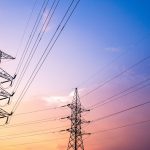
Natural. Holistic. Eco-friendly. What do these terms mean when it comes to landscaping and lawn care?
Those looking to reduce their use of synthetic pesticides and fertilizers are facing an increase in greenwashing. In 2012, Scott Miracle-Gro paid criminal fines and civil penalties for pesticide law violations, including affixing misleading labels to pesticides. In 2020, the non-profit organization Beyond Pesticides sued TruGreen over its claim to offer “environmentally friendly, sustainable lawn care services that use no chemicals that may cause cancer, allergic reactions, or other health or environmental harms”—statements that Beyond Pesticides asserts are false and deceptive. TruGreen uses glyphosate, classified as probably carcinogenic by the International Agency for Research on Cancer, as well as a weedkiller with a label warning of “irreversible eye damage” and “allergic reactions,” and a neurotoxic insecticide, according to Beyond Pesticides. This past July, California’s pesticide agency issued a warning that products marketed by EcoMIGHT as organic and natural contained potentially hazardous pesticides.
“It can get pretty confusing, because there’s not really a certification for organic landscaping,” Ryan Anderson, Community Integrated Pest Management Manager for Midwest Grows Green, a program of the non-profit IPM Institute of North America, told EHN. “Organic” claims are regulated by the federal government only in regard to food—so claims of “organic” for any other products are not regulated.
Related: Bayer to replace glyphosate from US lawn products by 2023
This is problematic because there are thousands of pesticides, and some that are routinely applied to lawns, are linked with serious health problems. For example, while glyphosate—the active ingredient in Roundup weedkiller, in the news because of lawsuits claiming it caused cancer cases—has gotten the bulk of the attention, 2,4-dichlorophenoxyacetic acid, or 2,4-D for short, has flown under the radar, despite being one of the most commonly used herbicides on lawns. The federal Agency for Toxic Substances and Disease Registry says 2,4-D is “toxic to both animals and humans” and that liver problems and nerve damage may result from long-term exposure. The International Agency for Research on Cancer considers 2,4-D a possible human carcinogen. There is also concern over its possible endocrine-disrupting effects.
Popular “weed and feed” products found at the hardware store can contain toxic pesticides including 2,4-D, as well as chemical fertilizers that can contaminate water supplies. While manufacturers may not claim the products are natural, use of terms like “green lawn” could give the impression that their ingredients are harmless. However, resources to make informed decisions are available, but consumers need to know where to look and what questions to ask.
“We’re so ingrained to look at a label when we buy food,” Janet Hurley, Extension Program Specialist in Integrated Pest Management at Texas A&M University, told EHN. “It’s a disconnect that we don’t do the same with pesticides.”
Organic vs. natural

The Federal Trade Commission (FTC) provides guidance about environmental marketing claims via its “Green Guides.” The most recent version was published in 2012. The Green Guides warn that it is deceptive for a marketer to “misrepresent, directly or by implication, that a product, package, or service offers a general environmental benefit.”
While the agency provides overall guidance about environmental claims, it does not address the use of several specific terms, including “organic,” “natural,” and “sustainable.” There is more general agreement among landscape and chemical policy experts about types of lawn care practices, as opposed to products, there is still a lack of clarity around what’s safe.
Both organic lawn care and natural lawn care prioritize “cultural controls” like aerating and mowing high, which help strengthen the grass and fortify its innate ability to fend off weeds and pests. Most experts view organic lawn care as meaning that products applied are not synthetic. For example, corn gluten meal used for weed control would be considered an organic option. Others define organic lawn care as using mostly or solely products certified by the Organic Materials Review Institute, which independently reviews products intended for use in organic food production.
“The organic side of lawn management is probably the biggest growth sector,” Chip Osborne, president of Osborne Organics, LLC and founder of the Organic Landscape Association, told EHN. “There are people looking to cash in.”
“Natural” lawn care is often understood to be mostly pesticide-free but to allow minimal use of some low-risk pesticides. Integrated Pest Management is a pest control system that is well-established in the indoor environment, where its emphasis on addressing the root causes of pests has been successful in replacing regular indoor pesticide spraying. However, its application in the outdoor setting is not as uniformly understood, so the term is used loosely.
So which lawn care claims hold water?
Organic and natural lawn care providers will use a soil test to identify nutritional deficiencies, then focus on those. “A company that makes a determination based on the soil test—that is an excellent sign,” Anderson said.
Osborne also emphasized the importance of a lawn care provider focusing on cultural controls. “The hard thing for the consumer is that they call a landscaper, and they will say that only chemicals work, or that they can use organic products,” he says. “But organic lawn management is not a product swap-out.”
For example, a conventional landscaper who makes a change by spraying a field with a less toxic herbicide, but who does not focus on cultural controls, is not addressing a consumer’s desire for environmentally sustainable lawn care.
Do your research

A consumer can ask companies for the label and Safety Data Sheet for every product they propose to apply. Labels are developed by the manufacturer and reviewed by the U.S. Environmental Protection Agency. Safety Data Sheets fall under the purview of the U.S. Occupational Safety and Health Administration. “If they don’t give it to you, that should be a red flag,” said Hurley. These documents are also typically available online.
For Safety Data Sheets, Hurley recommends focusing on:
- Section 1, identifies the chemical;
- Section 2, identifies hazards and includes the “signal word,” which indicates the product’s toxicity level. A good rule of thumb is to avoid those with the “danger” or “warning” signal words, which indicate higher toxicity. However, the signal word has limitations, including that it considers only acute toxicity and not long-term toxicity (like cancer risk). The chemicals listed can also be cross-checked against online resources. California’s Proposition 65 List identifies chemicals, including pesticides, that cause cancer or reproductive harm.
- Section 3, lists the product’s ingredients;
- Section 11, includes toxicological information.
What if the pesticide applicator says that the product is registered (or approved) by the EPA? That information isn’t too useful, since the registration process for pesticides is rife with gaps. The main federal pesticide law, the Federal Insecticide, Fungicide and Rodenticide Act (FIFRA), was passed in 1947, when chemicals were being repurposed for use in the post-war economy and the suburbs were developing—along with the new conception of the smooth, monochromatic lawn.
Under FIFRA the EPA doesn’t have to analyze “inert” ingredients, which often comprise much of the product and can be toxic. The EPA is required to conduct a cost-benefit analysis, which in practice often takes account of or assumes economic benefits of a pesticide, while not considering many costs of its use. The agency is not required to determine whether an alternative, safer product could achieve the same purpose as the product proposed for registration. Additionally, industry wields enormous influence on pesticide regulatory decision-making. The result of these and other challenges is that pesticides that raise serious health concerns continue to be approved for use.
Let your lawn go wild
Some universities, organizations, and government agencies are trying to help consumers make sense of the many lawn care choices.
- Montgomery County, Maryland’s Office of Consumer Protection provides tips for consumers who seek organic lawn care, including questions to ask potential landscapers.
- California’s Department of Pesticide Regulation and the National Pesticide Information Center—which is also a good resource for health information about specific pesticides—have websites to help consumers understand pesticide labels.
- Case studies about lawn care that does not use pesticides are published by the Toxics Use Reduction Institute at the University of Massachusetts Lowell.
- The EPA publishes a list of reduced risk pesticides.
- Some non-profit organizations, like Midwest Grows Green and the Northeast Organic Farming Association, provide lists or search tools for identifying lawn care providers that use organic practices.
An even better option for avoiding lawn care greenwashing? Ditch the dream of the perfect, weed-free lawn. There is a growing recognition of the environmental and public health harms needed to maintain grass lawns. Often not native to its location, grass requires applications of fertilizer and weed control products, irrigation, and mowing, all of which can pollute the air, water and land, and are a major contributor to greenhouse gas emissions.
More Americans are letting nature take its course, switching to native plants, meadow grasses, ivy, and butterfly gardens that support human and pollinator health and reduce or eliminate the need for toxic product inputs and maintenance.
“The expectation of a 100 percent monoculture of grass was created by industry in the 1950s,” when the concept of ‘better living through chemistry’ prevailed, said Osborne. “It is abnormal.”
Banner photo: Fotos_PDX/flickr





